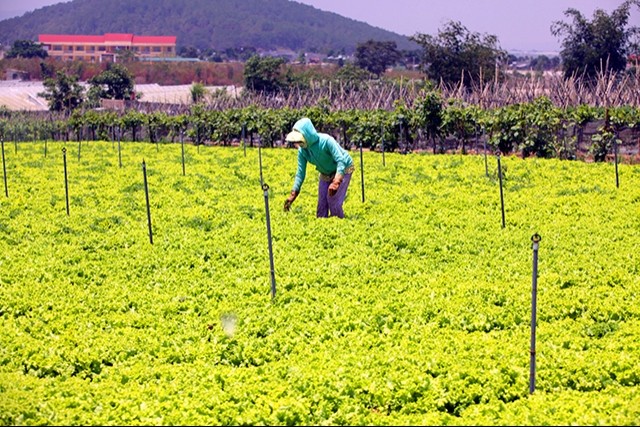(VOVworld)-In 2017, Vietnam’s agriculture should exert greater efforts to overcome difficulties in the export market and ensure domestic food security despite climate change.
 |
2017 a pivotal year given the difficulties being faced, according to Agriculture Minister.
(Photo: dtinews.vn) |
Last year Vietnam faced cold spells in the north, and drought and saline intrusion in the Mekong River Delta, Central Highlands, and South Central region. In addition, marine pollution in 4 central provinces and flooding in the final months crippled agricultural production and exports. Despite these setbacks, the agricultural sector achieved a growth rate of 1.36% and farm export revenue reached a record high of more than 32 billion USD. Vegetables, fruits, fisheries, and livestock all achieved breakthrough growths.
Dang Kim Son, former Director of the Institute of Policy and Strategy for Agriculture and Rural Development, said: “All scenarios in response to climate change should be put into long-term, medium-term, and even annual plans. This should be widely publicized to farmers, businesses, and local administrations so that they can thoroughly understand the negative impacts of climate and take preventive measures.”
In 2016, natural disasters caused heavy losses for agriculture, leading to a negative growth rate of 0.18% in the first six months of the year.
In 2017, the sector will likely face new kinds of natural disasters, so forecasting will become more important than ever, said Tran Quang Hoai, Deputy Director of the General Department of Water Resources.
According to Hoai, “First, administrations at all levels should get prepared. Second, forecast activities should be more precise, timely, and longer-range. The ‘4-on-the spot’ guideline is particularly important for the response to natural disasters and should be applied differently to each type of natural calamity, depending on the geographical conditions in each region. In the long run, we need to define the main types of natural disasters which can cause large-scale damage and design scenarios and plans to cope with them.”
The “4-on-the-spot” guideline means to mobilize all available local resources including management, personnel, equipment and facilities, and logistics.
Minister of Agriculture and Rural Development Nguyen Xuan Cuong says that to maintain the growth rate, the sector should focus its restructuring on developing mainstream products. Specifically, at the national level, the Ministry will select the 10 most profitable products with export value of 1 billion USD or more to dominate the market. Next, there will be provincial products, followed by local products.
Mr. Cuong said the Ministry will pay special attention to adapting production to climate change, adding that “Each region or locality should select key products and apply suitable technologies to minimize the negative impacts of natural disasters which often occur in the area. Agricultural production should be developed in a way that turns climate change disadvantages into advantages.”
Vietnam’s agriculture targets a growth of 2.5 to 2.8% in 2017, a pivotal year in the sector’s 5-year development plan and the national socio-economic development plan until 2020.